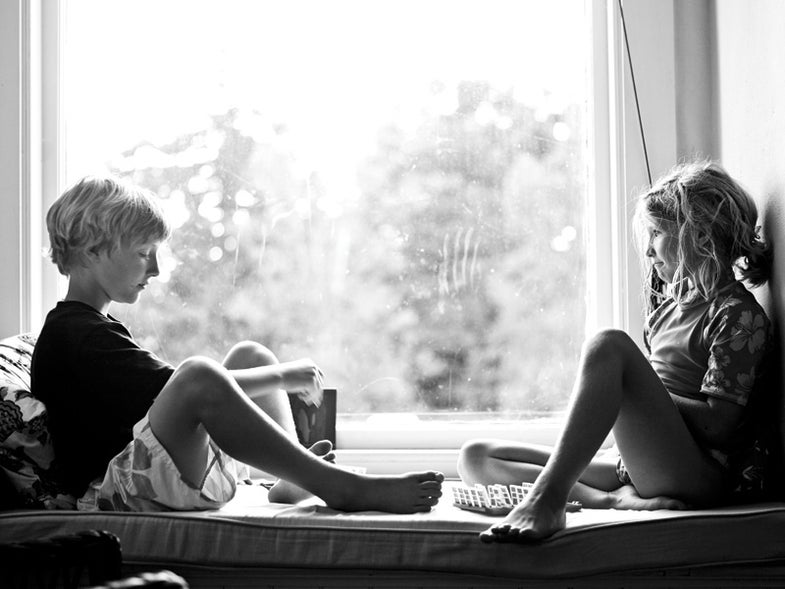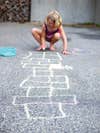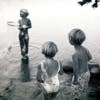Photograph Your Family: How-To Take Great Candid Photos Of Kids
Winky Lewis, one of the nations best children photographers, shares her secrets

Photo: Winky Lewis.
We asked one of the country’s best professional child photographers how she captures the innocence, warmth, sweetness, and silliness of childhood. Her answer? She never fakes it.
Your images of children have a wonderful natural and unposed quality. How do you achieve that?
I mainly look for actual, candid moments. They say the most because they capture something real. I keep my camera within easy reach, and it’s normal for me to take photos of everyday happenings; not just birthdays, first days of school, or holidays, but all the time. Of course, it helps that most of my photos are of my own kids, and they’re pretty comfortable with me taking pictures of them.
Do you ever pose your subjects?
For the most part, my kids don’t love taking direction. I pretty much follow their lead, because they’ve taken me to some great places. For natural poses, it’s a matter of waiting for the moment that seems right. Recently, my younger son (a middle child, who is 9), acted as stylist for his younger sister. He set up the shoot at a pond in Maine, where we live, and I was just along for the ride. He was amazing, and I just clicked the shutter. It was so fun! The lesson: Involve kids in the photographic process.
How long does a typical session last, and how do you keep kids interested?
The shoots are short and sweet. When I’m hired to photograph kids—I get a lot of private commissions—it always goes quickly. A little over an hour is average for a session. To keep them involved, I keep things moving.
What do you seek in locations and backgrounds?
The most important aspect of a location is the light. I use mostly natural light, so finding good light is the first step. I love fog! I live in Maine, so I’m lucky that way. I don’t know what it is about the light here, but it’s special. Especially in fall. Of course, I try to avoid harsh midday light; I don’t even try to take pictures then. Early morning, late afternoon, and on cloudy days are my best times for photos.
As for backgrounds, I gravitate towards simplicity, so that the pictures are more about the person than what’s behind them. Often, the easiest way to simplify is to use a fast lens and shoot close to wide open at apertures such as f/2.8 or f/4 in order to defocus the background.
You need some space between the subject and the background for this to work, though. Of course, I often have to shoot at these apertures, because of dim light.
I also like simple foregrounds. As you can see in most of the pictures here, I usually like to keep whatever is in the foreground sharp. If something in the foreground is blurred, I feel like it’s a complication or an obstruction that keeps the viewer from easily accessing or appreciating the subject.
And wardrobe?
I ask parents to dress their kids in clothes that the kids will be comfortable in. I prefer children wear their favorite clothes that are worn and loved rather than fancy, new, photo-session outfits that can look stiff.
Picking out clothing is also a good way to get kids invested in a photo session. I have two boys and a girl, and my daughter has a pretty cool fashion sense. She can put together some wonderful outfits. Anything she styles—even if it’s a dress made out of cardboard!—is pretty great. But I admit, I do stock her wardrobe with items I prefer.
How do you handle kids who might not want to be photographed?
One advantage of digital photography is that you can share an image with your subjects, and if they like it, you’ve got their interest. Making faces or photographing a favorite stuffed animal in a shy child’s hands can help get things going, too.
What equipment do you use and why?
I’m all digital now, and it’s sad in a way, but it does have its benefits. My favorite camera used to be a Hasselblad 500c that I’d had for 20 years or so. Then Kodak discontinued the 120 version of the TMax chromogenic b&w film 400CN, and I was heartbroken. So I took the plunge and got an 22MP Hasselblad H3D. It paid for itself pretty quickly, with no film costs or shipping costs to my old lab in New York City. It’s an amazing machine. I also use a Nikon D3 and D3s, plus an Epson Stylus Pro 4800 printer. I almost exclusively use two lenses: Hasselblad’s 80mm f/2.8 HC and the Nikon 24–70mm f/2.8G.
How did you get started photographing children?
My father took beautiful photographs of our family when I was young, and I’ve always treasured those pictures. Most photographers of my generation say it was the Kodak Instamatic that got them started, and for me that was the case, too. My older brother and father also gave me an enlarger when I was about 13, and I was hooked. For the last 11 years, I’ve been so lucky to photograph my own three children.
Got advice for those who want to enter the field?
I think you break into the field because it works for you. A lot of moms get into it because they take photos of their kids and then are asked to photograph other peoples’ kids. Eventually, it snowballs into something. I started taking pictures of kids when I was young. My mother got very sick when I was 8 years old and, in the years that followed, I took lots of pictures of my little brother. I think I was focusing on him instead of the scary situation with her. Children have always been easy subjects for me.
What inspires you?
My kids, and our daily life, which is so full and runs the gamut of activities and emotions. Beautiful light, too, and of course, other photographers. There’s so much great work out there that is accessible on the Web. Aside from my father’s family photos, my first inspiration was Emmet Gowin, whom I was fortunate enough to study under in college.
You have a very child-friendly first name. Has it helped in your work?
Ha! When I think about it, my name is so embarrassing. It’s not my real name, of course, but a nickname my older brother bestowed upon me when I was a baby, and somehow it stuck.
Most of your portraits are taken at the child’s eye level. Do you wear kneepads 24/7?
Great idea! It’s true. Lots of my photos are taken at a child’s eye level. For the most part, I don’t do that consciously, but there are times when I catch myself looking down on kids and thinking, ‘No I don’t want to do this. I don’t like this view.’
Winky Lewis specializes in child and family portraiture. She is based in Portland, ME, where she lives with her husband and three children. To see more of her work, visit winkylewisphoto.com or her Instagram feed: @winkylewis.

Capture Interaction
Photo: Winky Lewis

Working in low Light
Photo: Winky Lewis

Childhood Milestones
Photo: Winky Lewis

Graphics Count
Photo: Winky Lewis

Group Plan
Photo: Winky Lewis

Emotional Range
Photo: Winky Lewis